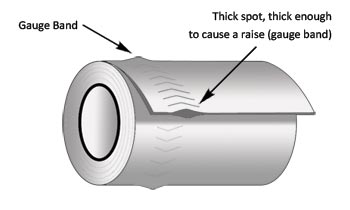

January 4 2017

Eliminate unpredictable results by revealing all process challenges
While it’s natural for processors to blame the winder when defects appear in roll goods, more often than not the root cause of the problem can be traced to the process upstream. A poorly designed winder or a good winder applied to the wrong application can certainly exacerbate typical roll defects like starring, edge profile variation, and telescoping. However, there are many web problems created by upstream processes or equipment issues that can’t be rectified by a well-designed winder. Non-uniform thickness profiles can lead to severe gauge banding, wavy edges, and baggy lanes; formulation deficiencies combined with overly tight winding create blocking issues; deformed web due to misaligned process rollers, process inconsistencies, and/or inadequate tension control can result in wrinkles that are impossible to eliminate from the finished roll.
When these flaws can’t be overcome through upstream process optimization, it can lead to plenty of frustration, production waste, and delays. That’s why—if you’re in the market for a winder replacement or upgrade—it’s important to convey any quality issues you’re currently having to the winder manufacturer before purchasing a new machine. Additionally, a winder manufacturer that’s paying attention to the requirements will ask to review and observe current performance, if possible. That way, all parties understand the process challenges and together can accurately establish appropriate expectations regarding winding results from the new machine. For example, unresolved problems in upstream sections of the production line may require tradeoffs such as winding looser packages or smaller diameter finished rolls to reduce the likelihood that winding defects will occur.
If you don’t let the winder manufacturer know about current problems you’re having with finished roll quality, your results with a new machine could be unpredictable and disappointing. It’s like visiting the doctor and not divulging all of your symptoms and then expecting him or her to provide the correct treatment!
Evaluating your entire production process is critical in determining what areas must be addressed before specifying a new or rebuilt winder. In many cases, changes to upstream equipment or process parameters are also required to ensure that you achieve the highest levels of quality that you desire in your finished products.